Related Research Articles
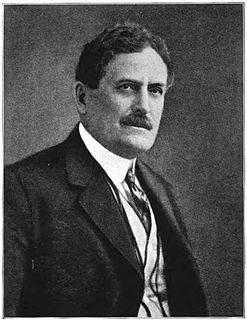
Myron Timothy Herrick was an American banker, diplomat and Republican politician from Ohio. He served as the 42nd governor of Ohio and United States Ambassador to France on two occasions.
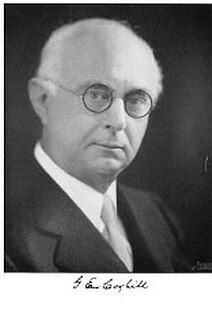
George Ellett Coghill was an American philosopher anatomist best known for his work relating neuromuscular system development with movement patterns in embryos. Coghill performed much of the empirical work supporting the theory that development of movement is not simply the accumulation of individualized reflexes, but rather a result of the differentiation of generalized total movement.
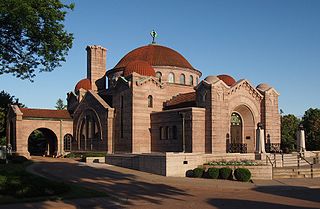
Lakewood Cemetery is a large private, non-sectarian cemetery located in Minneapolis, Minnesota, United States. It is located at 3600 Hennepin Avenue at the southern end of the Uptown area. It is noted for its chapel which is on the National Register of Historic Places and was modeled after the Hagia Sophia in Istanbul, Turkey.

Charles Henry Turner was an American zoologist, educator, and comparative psychologist, known for his studies on the behavior of insects, particularly bees and ants. Born in Cincinnati, Ohio, Turner was the first African American to receive a graduate degree at the University of Cincinnati and most likely the first African American to earn a PhD from the University of Chicago. Being a black man in the eighteen hundreds he was a victim of racism. He spent most of his career as a high school teacher in Sumner High School in St. Louis.
Thomas Blanchard Stowell (1846–1927) was a distinguished American educator.

Kirtley Fletcher Mather was an American geologist and faculty member at Harvard University. An expert on petroleum geology and mineralogy, Mather was a prominent scholar, advocate for academic freedom, social activist, and critic of McCarthyism. He is known for his efforts to harmonize the dialogue between science and religion, his role in the Scopes "Monkey Trial", his faith-based liberal activism, support for adult education programs and advocacy for civil liberties.

The University of Minnesota Old Campus Historic District is a historic district located in Minneapolis, Minnesota. Listed in the National Register of Historic Places since 1984, it includes a number of historic buildings that were constructed during the late 1800s and early 1900s. The district represents the oldest extant section of the University of Minnesota campus.

Alfred Walter Campbell was regarded as Australia's first neurologist.

Hiram Fairchild Stevens was an American lawyer, politician, and academic from Minnesota. He was one of the five co-founders of William Mitchell College of Law and a charter member of the American Bar Association.

John Nathan Kildahl was an American Lutheran church minister, author and educator.
Haldor Johan Hanson was an American hymn writer, publisher and author.

Elizabeth C. Crosby was an American neuroanatomist. Elizabeth C. Crosby was born to Lewis Frederick and Francis Kreps Crosby in Petersburg, Michigan in 1888. Crosby received the National Medal of Science from President Jimmy Carter in 1979 "for outstanding contributions to comparative and human neuroanatomy and for the synthesis and transmission of knowledge of the entire nervous system of the vertebrate phylum." Her "careful descriptions" of vertebrate brains - especially reptiles - helped "outline evolutionary history" and her work as a clinical diagnostic assistant to neurosurgeons resulted in "the correlation of anatomy and surgery."
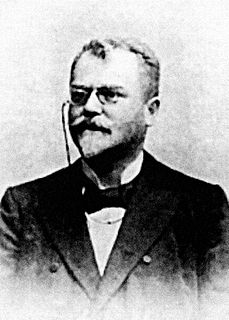
Ladislav Haškovec was a Czech neuropsychiatrist, eugenicist, and physician, professor of neuropathology at the Charles University in Prague. In November 1901 he coined the term "akathisia" in the journal Revue neurologique, and with Jean-Martin Charcot provided an initial demonstration to the Paris Neurological Society after noting that two patients were unable to remain seated. In 1905 he founded the first neurological department in the area of today's Czech Republic. He is considered one of the founders of the Czechoslovak neurology.
The 1891 Ohio State Buckeyes football team represented Ohio State University in the 1891 college football season. They played all their home games at Recreation Park and were coached by Alexander S. Lilley. The Buckeyes finished the season with a 2–3 record.
John Charnley McKinley was an American neurologist who co-authored the psychological assessment known as the Minnesota Multiphasic Personality Inventory (MMPI). He was educated at the University of Minnesota, where he spent almost all of his academic career.
Fanny E. Langdon was an American zoologist known for her work with invertebrate sensory organs and nervous systems. Langdon was born in Plymouth, New Hampshire and attended a normal school, teaching for three years in New Hampshire before pursuing undergraduate studies in zoology and botany at the University of Michigan in 1891. She earned her bachelor's degree in 1896 and her master's degree in 1897. After earning her degrees, she became an instructor in botany and zoology at the University of Michigan, and researched at the Marine Biological Laboratory in Woods Hole, Massachusetts in 1897. Langdon died after appendicitis surgery.

Baldev Singh was an Indian neurologist. He was best known for collaborative works with neurologists Jacob Chandy, Balasubramaniam Ramamurthi and S. T. Narasimhan and together they have been credited to be pioneers in development of epilepsy surgery in India. They also helped in establishing the Neurological Society of India in 1951 at Madras. After training in the United States of America, he returned to India and established himself at Delhi. He was presented with the Padma Bhushan in 1972 for his contributions in the field of medicine.
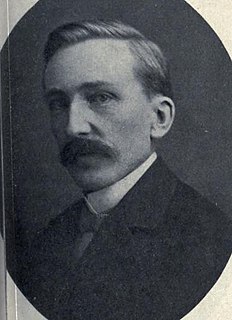
Thomas Sadler Roberts was an American physician known for his work in ornithology, bird conservation and for his book The Birds of Minnesota (1932), a comprehensive account on the birds of the Minnesota area. Roberts was an influential educator on birds and their conservation and helped establish the Bell Museum of Natural History. Thomas Sadler Roberts Bird Sanctuary in Minneapolis is named after him. He was among the many ornithologists who saw the last flocks of the passenger pigeon in Minneapolis.

Charles Judson Herrick was an American neurobiologist who made comparative studies across vertebrate neural systems. Along with his brother Clarence Luther, he was a founding editor of the Journal of Comparative Neurology. He published several popular books including the Neurological Foundations of Animal Behavior (1924), The Brain of Rats and Men (1926), and The Thinking Machine (1928).
William Frederick Windle was an American anatomist and experimental neurologist.
References
- 1 2 3 4 Tight, W. G. (1905). "Clarence Luther Herrick". The American Geologist. 36 (1): 1–26.
- 1 2 3 4 5 6 7 8 Herrick, Charles Judson (1955-01-01). "Clarence Luther Herrick: Pioneer Naturalist, Teacher, and Psychobiologist". Transactions of the American Philosophical Society. 45 (1): 1–85. doi:10.2307/1005723. JSTOR 1005723.
- ↑ Bartelmez, George W. (1971). "Charles Judson Herrick 1868-1960" (PDF). Biographical Memoirs. National Academy of Sciences.
- 1 2 "Clarence L. Herrick. Obituary". The Monist. 15 (1): 151–153. 1905-01-01. doi:10.5840/monist190515136. JSTOR 27899571.
- 1 2 3 Cole, A. D. (1904-11-04). "Clarence L. Herrick". Science. 20 (514): 600–601. Bibcode:1904Sci....20..600C. doi:10.1126/science.20.514.600. ISSN 0036-8075. PMID 17775467.
- ↑ Abramson, Charles I. (2008-12-09). "A Study in Inspiration: Charles Henry Turner (1867–1923) and the Investigation of Insect Behavior". Annual Review of Entomology. 54 (1): 343–359. doi:10.1146/annurev.ento.54.110807.090502. ISSN 0066-4170. PMID 18817509.
- 1 2 Davis, William (2006-01-01). Clarence Luther Herrick - Biography. Biographies of UNM Presidents. Albuquerque [N.M.]: University of New Mexico Press. ISBN 0826340164.
- ↑ Cobban, W.A.; Hook, S.C. (1980). "The Upper Cretaceous (Turonian) ammonite family Coilopoceratidae Hyatt in the Western Interior of the United States". Professional Paper. 1192: 22. ISSN 2330-7102.